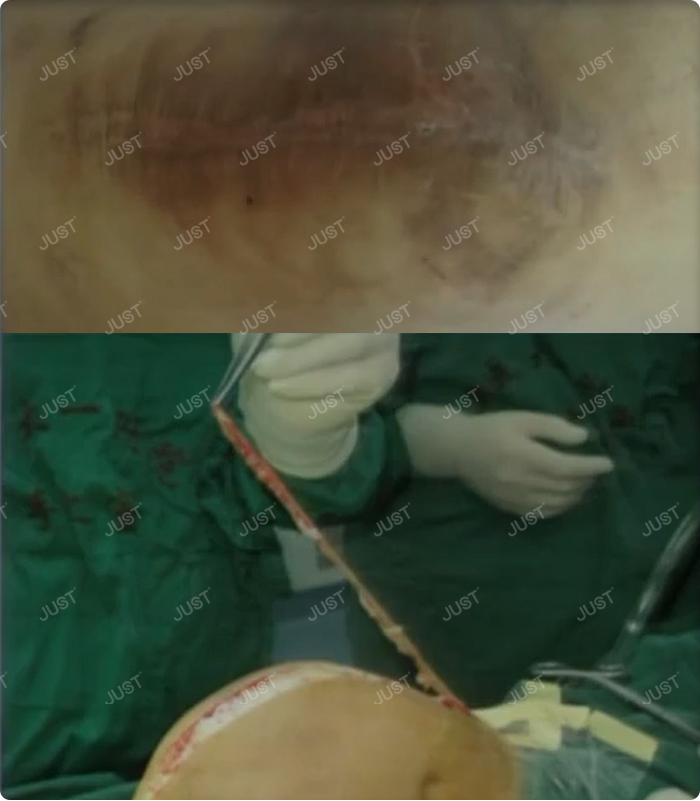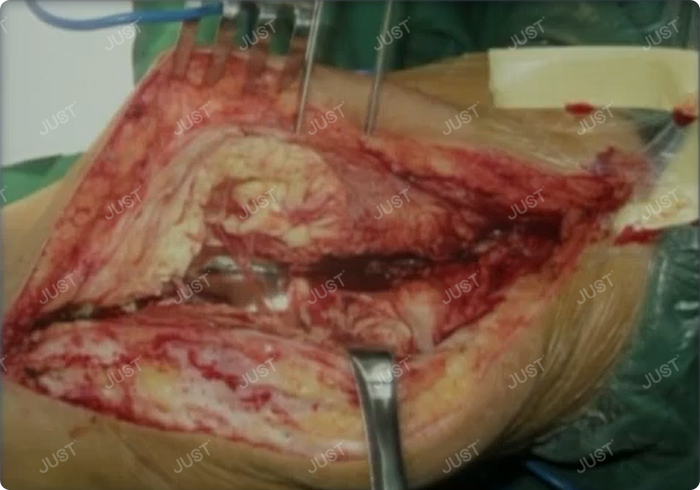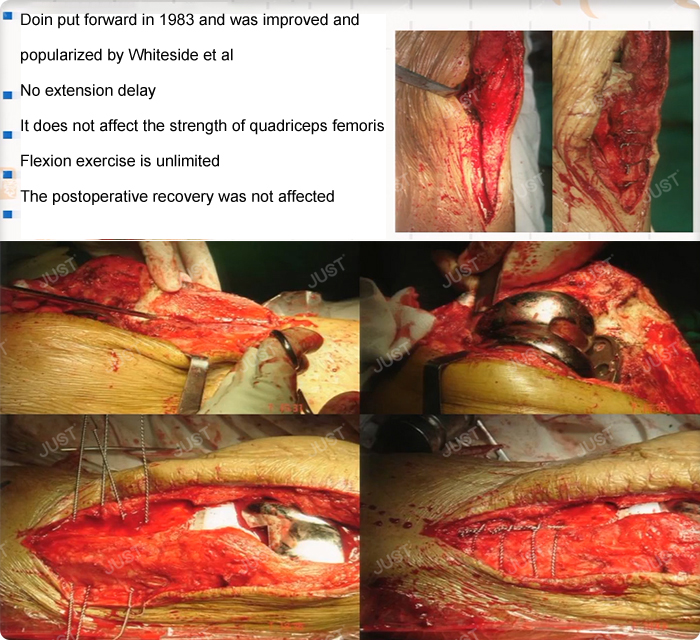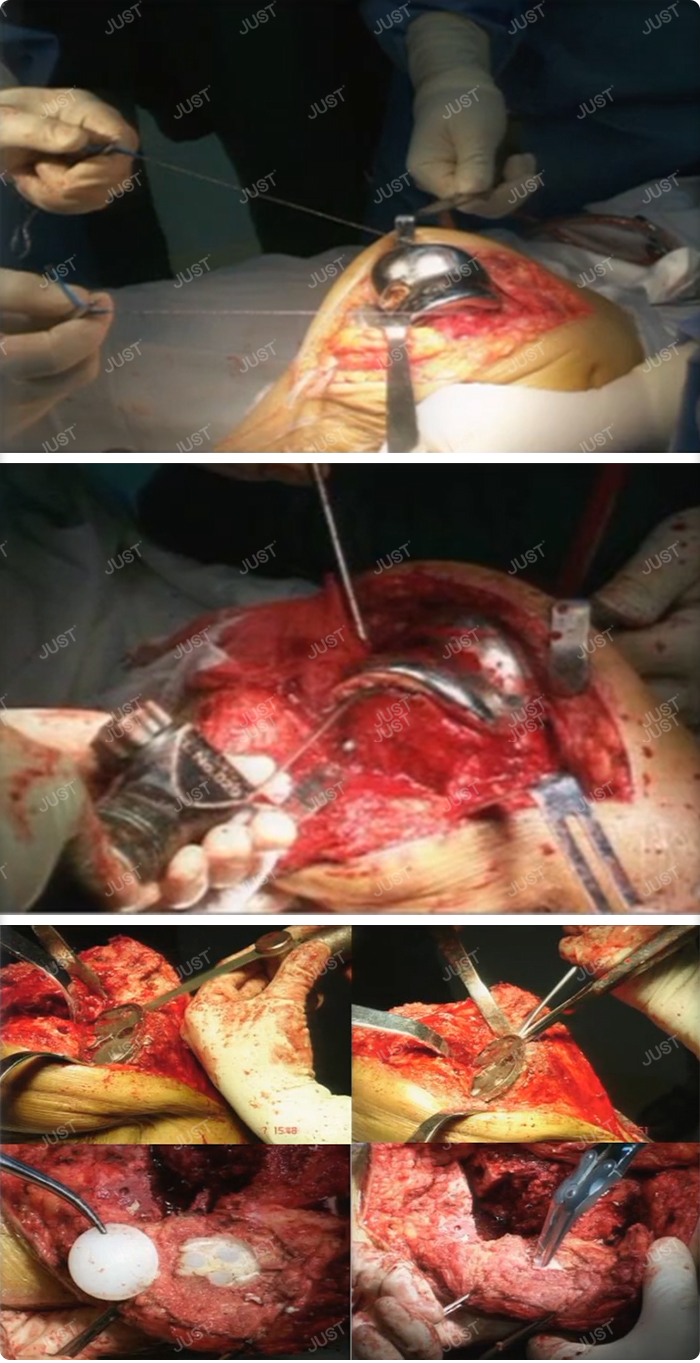7 steps of knee revision surgery (1)
 Aug. 24, 2020
Aug. 24, 2020
7 steps of knee revision surgery (1)
Objective of revision knee arthroplasty:
In order to obtain stable, painless and functional joints
l Balance flexion extension clearance
l Reconstruction of lower limb alignment
l Reconstruction of joint line
l Reconstruction of bone defect
Step 1: Expose, remove skin scar

The fibrous scar tissue in articular cavity was completely removed.

For the cases of stiff knee joint or contracture of knee extension device, special surgical exposure technique is needed.
For example, the quadriceps tendon oblique cut (SNIP)
Insall proposed for the exposure of ankylosed knees
l Easy
l Effective
l No side effects: no effect on muscle strength; No extension delay (Garvin et al: CORR 321: 1995/Barrack et al: CORR 356: 1998)
l It is widely used
l It does not affect the postoperative rehabilitation plan
l The quadriceps should be long enough
The osteotomy of tibial tubercle (TTO)

Step 2: Remove the old prosthesis
There are many methods to keep bone mass as much as possible to avoid further damage to soft tissue. It is suggested that swing saw and reciprocating saw should be used, and wire saw should be used less.

Step 3: Select the appropriate prosthesis (the constrain level is gradually increased)
PS prosthesis (plus tibial bearing) - Constrained condylar knee prosthesis (CCK) - Rotating hinged knee prosthesis - Hinged knee prosthesis
The principle is to achieve maximum knee stability (stability is the most important) with minimal prosthesis limitation.
The role of condylar restrictive prosthesis:
l The primary replacement is mainly used in patients with unstable coronal plane, and the rotating hinge knee joint is used for patients with severe deformity or instability that cannot be solved with condylar restrictive prosthesis
--Morgan H et al. JAAOS 2005 13:515
l It is especially suitable for severe valgus deformity with medial relaxation and revision of knee joint
--Sculco TPJOA. 2006, 21(4 Suppl 1): 54
l When balancing flexion and extension gaps in revision, increasing the limitation of prosthesis when necessary can help to achieve better results
--Mihalko WM et al. CORR 2006: 446: 121
Indications of condylar restrictive prosthesis:
l Medial collateral ligament dysfunction
l Lateral collateral ligament dysfunction
l Severe valgus deformity
l Unbalanced buckling and straightening clearances:
Severe ankylosis
Severe flexion contracture
Revision knee
Step 4: Deal with bone defect and restore the joint line (Operation difficulties).
(To be continued…)













